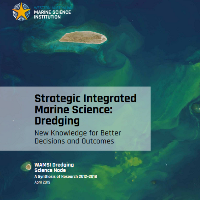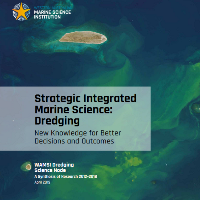Perspectives on Dredging Symposium

Australia has experienced unprecedented levels of dredging over the last two decades and recently there has been a focus on dredging research in Western Australia.
As a result, there have been some incredible advances in our understanding of impacts to the marine environment from dredging and how to better predict, monitor and manage dredging programs, such as the WAMSI Dredging Science Node.
The “Perspectives on Dredging” AMSA symposium brings together scientists, regulators, managers, industry and consultants with practical experience of dredging practices in the marine environment.
The session will focus on impact prediction, monitoring and the lessons learnt from implementing the vast range of dredging programs ranging from those associated recent mega-projects in Western Australian and Queensland, to small maintenance dredging programs in coastal waterways.
“Perspectives on Dredging” provides an opportunity for dredging professionals to demonstrate their contemporary practical experience and how the impacts of dredging on the marine environment are predicted, managed and monitored in real-world scenarios.
When: Wednesday 10 July 4-6pm
Where: AMSA Conference, The Esplanade Hotel, Fremantle, WA
Speakers
Dr. Chaojiao Sun
Senior Research Scientist
Commonwealth Scientific and Industrial Research Organisation
New guidelines on dredge plume modelling for environmental impact assessment
Mr. Paul Branson
Research Fellow
Commonwealth Scientific and Industrial Research Organisation & The University of Western Australia
2D or not 2D: Is three-dimensional modelling required for passive dredging plume modelling?
Dr. Des Mills
N/a
N/A
Recent Developments in Estimating Source Terms for Far-Field Dredge Plume Model
Mr. Sterling Tebbett
PhD Student
James Cook University
Sediment Impacts and the Role of Algal Turfs in Sediment Dynamics on Coral Reefs
Prof. Paul Lavery
Professor
Edith Cowan University
Response and recovery of tropical seagrasses to variation in the frequency and magnitude of light deprivation
Dr. Brett Kettle
Visiting Scientist
Commonwealth Scientific and Industrial Research Organisation Oceans and Atmosphere
Closing the Gap: Perspectives on Using Best Practice Science in Best Practice Dredge Management
A/Prof. Kathryn Mcmahon
A/Prof
Edith Cowan University
Timing anthropogenic stressors such as dredging to mitigate their impact on marine ecosystem resilience
Mr. Ben Davis
Senior Consultant
BMT
Effectiveness of an environmental management framework in small-scale maintenance dredging
Chair
Dr Ross Jones
Australian Institute of Marine Science

